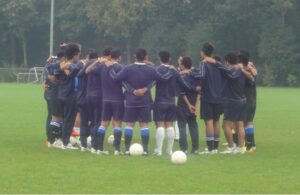Blog
Jul 06, 2022
Most businesses that have spent time in Government contracting have a clear understanding of what a proposal manager does. They are the miracle workers who work crazy hours to lead the team in transforming a semi-complete, semi-coherent document full of unsubstantiated declarations of greatness and word sprinkles like “we’ll write about this stuff here” to a fully-coherent, compelling, compliant proposal that stands out from the competition.
Do I Need a Capture Manager? Less clear to many in the field is what a capture manager does and how one adds value to an organization in general and an individual opportunity in particular. Here is a quick quiz to determine whether or not you need a capture manager:
If the answer is “no” to one of these questions, you likely have gaps in your capture process that you need to close to improve your chances of success. If the answer is “no” to two or more of these questions, you may be skipping key steps to capturing Government business and damaging your prospects well before the release of the RFP.
Capture Managers Gain Customer Insight and Influence. In Government contracting organizations with mature BD processes, a capture manager leads the pursuit of a specific opportunity from beginning to end. Capture managers are assigned from the point the organization decides to definitively bid an opportunity, which is well before the release of the RFP. Capture managers continue to lead capture after the RFP is released and throughout the proposal until the proposal is submitted. They work alongside the proposal manager throughout the development process to ensure the highest quality, clear, compelling submission. Capture managers continue to lead capture after submission to negotiate and/or lead development of ENs and FPRs with the Government, and provide inputs to legal counsel for protest strategy if necessary.
Capture managers are responsible for developing a comprehensive strategy to improve your organization’s pWin. One of the most significant drivers of pWin is the strength of the customer relationship. Capture managers work with BD to develop customer call plans of who to meet with, what to try and influence and shape, and what to message. They take the broader engagement picture and sharpen it for that one opportunity.
 Their first role is to shape an opportunity. Shaping an opportunity is extremely important and is a direct result of developing and fine-tuning those customer relationships. If you aren’t shaping, your competition is. Have you ever gotten an RFP that had requirements in it that only one or a few companies could meet, and caused you to not bid something you thought would be a great fit? That is the value of shaping.
Their first role is to shape an opportunity. Shaping an opportunity is extremely important and is a direct result of developing and fine-tuning those customer relationships. If you aren’t shaping, your competition is. Have you ever gotten an RFP that had requirements in it that only one or a few companies could meet, and caused you to not bid something you thought would be a great fit? That is the value of shaping.
A second output from customer relationships is a fuller understanding of the client’s needs and goals. Capture managers meet directly with customers and uncover the customer’s hot buttons, pain points, and needs for success. From there, they conduct workshops and strategy sessions. The goal of these strategy sessions and workshops is to create a win strategy and eventually, that evolves into a solution.
Capture Manager Bid Responsibilities. The capture manager is responsible for creating the win strategy. The win strategy provides clear guidance for everyone in the company, from executive leadership down to the proposal writer, of how exactly we are going to win this opportunity. The capture manager needs to provide guidance on how to win in every element of the proposal, including technical, management, staffing, key personnel, past performance, and pricing. What will it take to win in every section of the proposal? The capture manager needs to be able to answer this question and provide high-level direction to the team.
 The capture manager builds the team that will win the opportunity — both internally (solution architect, program manager, proposal manager, subject matter experts, pricer, etc.) and externally (subcontractors, vendors, etc). He/she needs to identify a lead for every element of the capture so the process runs smoothly, people understand their role, and nothing gets overlooked. The capture manager needs to start the capture early so they have their pick of the best subcontractors before they go to a competitor.
The capture manager builds the team that will win the opportunity — both internally (solution architect, program manager, proposal manager, subject matter experts, pricer, etc.) and externally (subcontractors, vendors, etc). He/she needs to identify a lead for every element of the capture so the process runs smoothly, people understand their role, and nothing gets overlooked. The capture manager needs to start the capture early so they have their pick of the best subcontractors before they go to a competitor.
The capture manager works hand in glove with the solution architect (SA) to create a winning solution. The capture manager provides guidance on what the customer wants to see in the solution. The SA then develops the solution and works with the SMEs that can help contribute to it. At the end of this process, the proposal team has a clear, coherent baseline for their early proposal artifacts (including storyboards or annotated outlines) that eventually become the proposal itself.
Conclusion. A well defined, disciplined capture process is vital to increasing your company’s pWin. Capture begins well before the RFP release to provide time to build relationships, understand what the customer really wants, and partner with the right companies. Solid capture makes the proposal far less painful, as everyone understands the win strategy and their role. A capture manager provides a great partner for your proposal manager. Great capture means your proposal manager will likely stick around longer and have more hair or, at least, less gray hair.